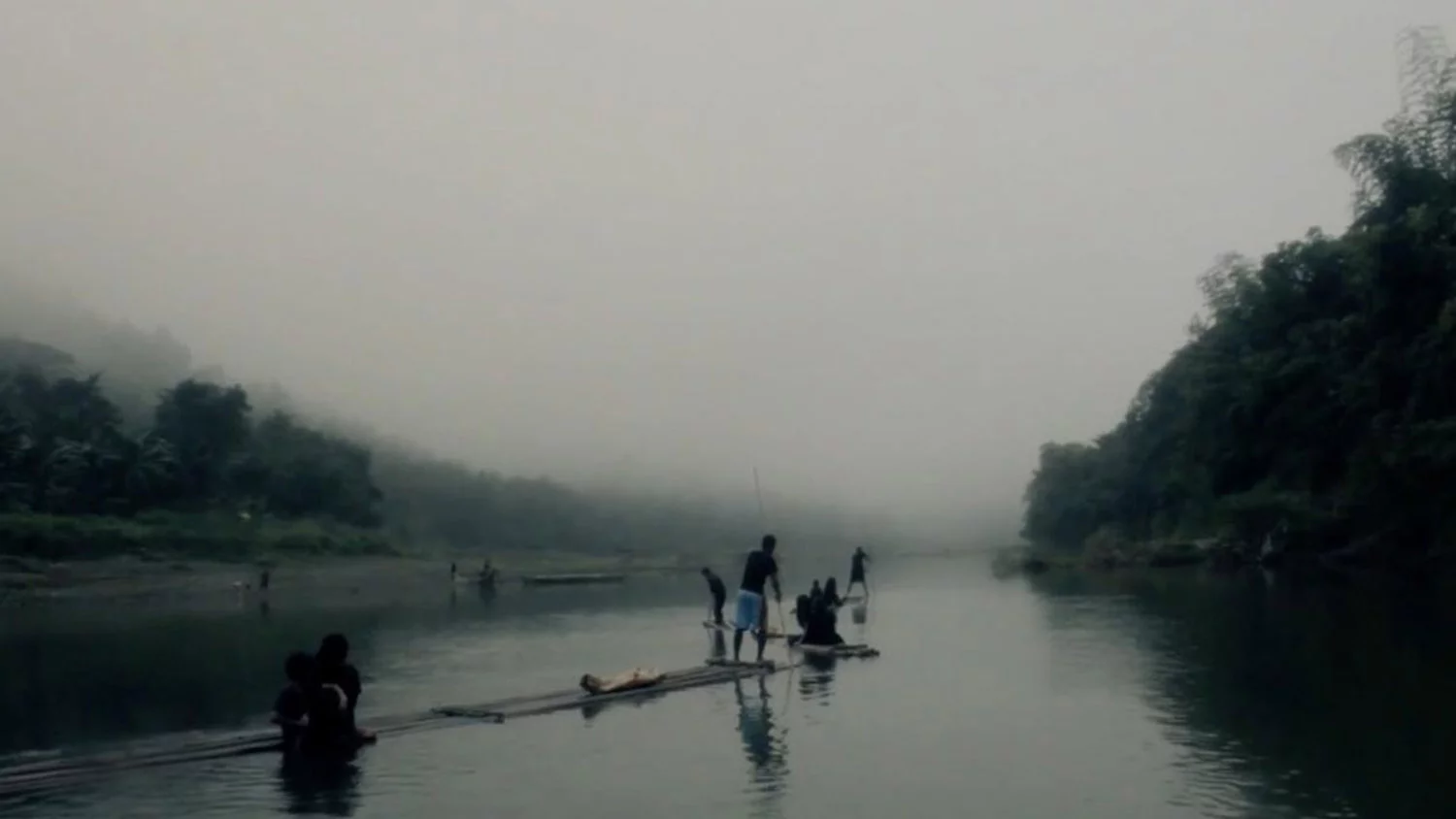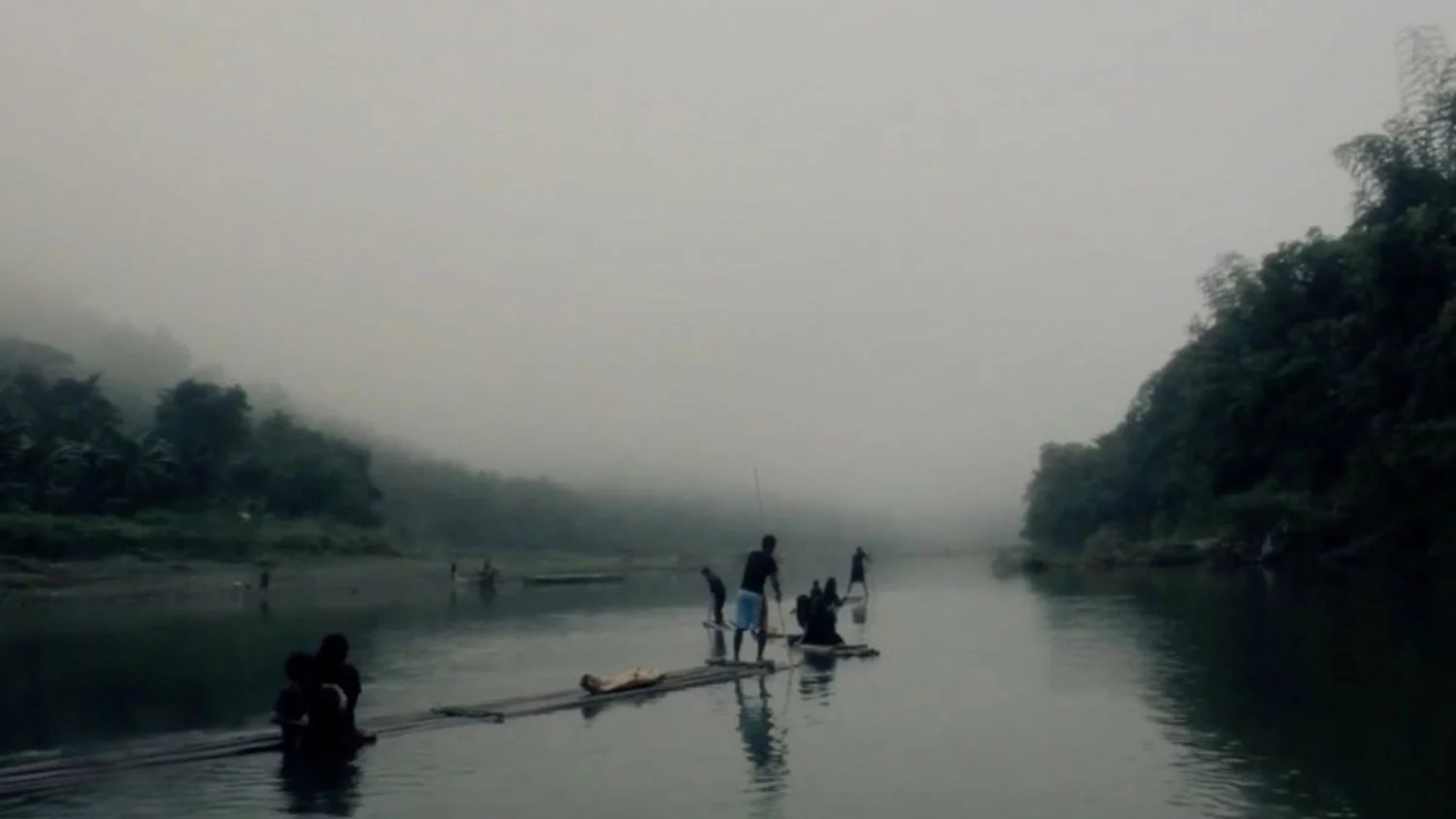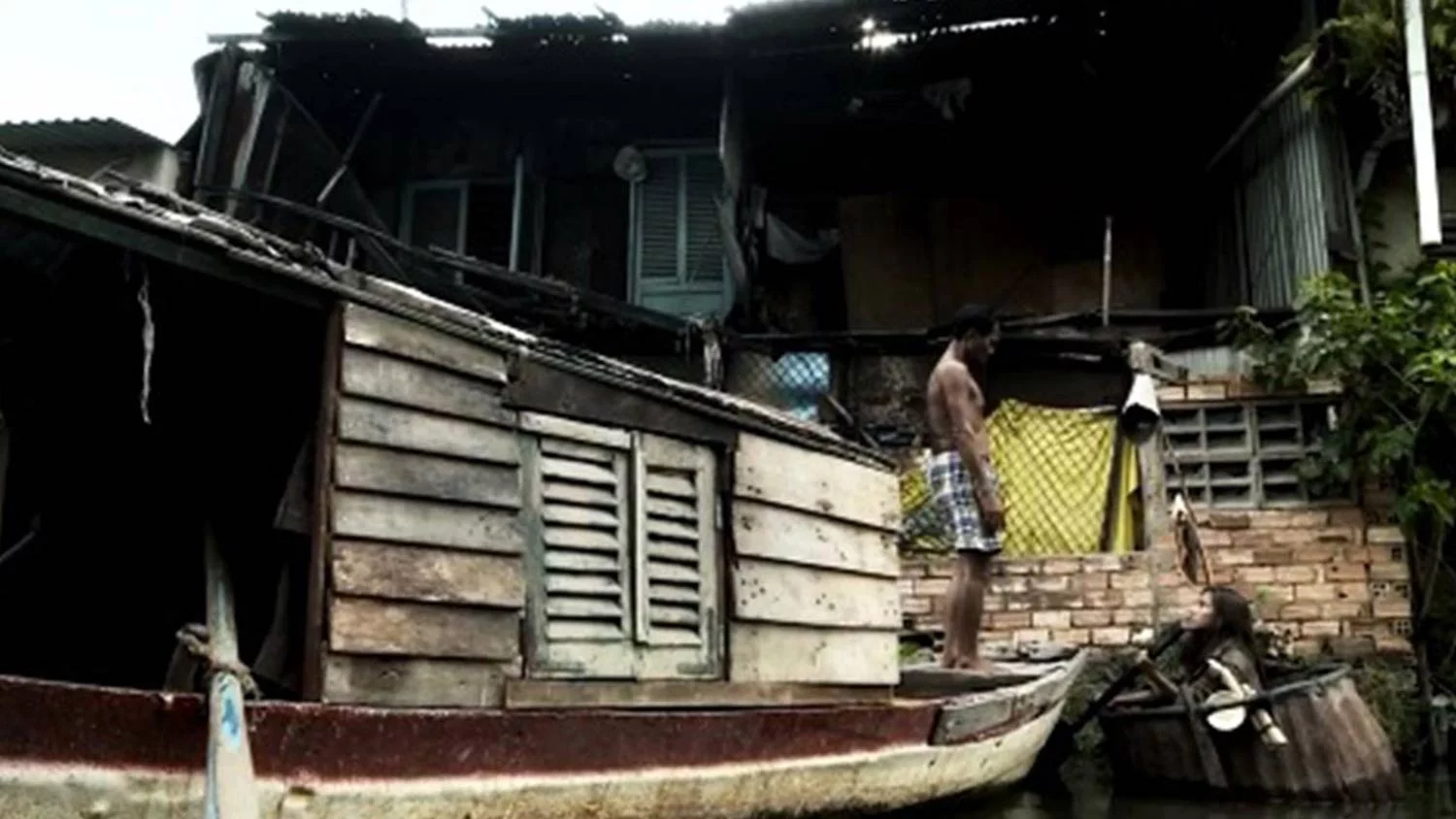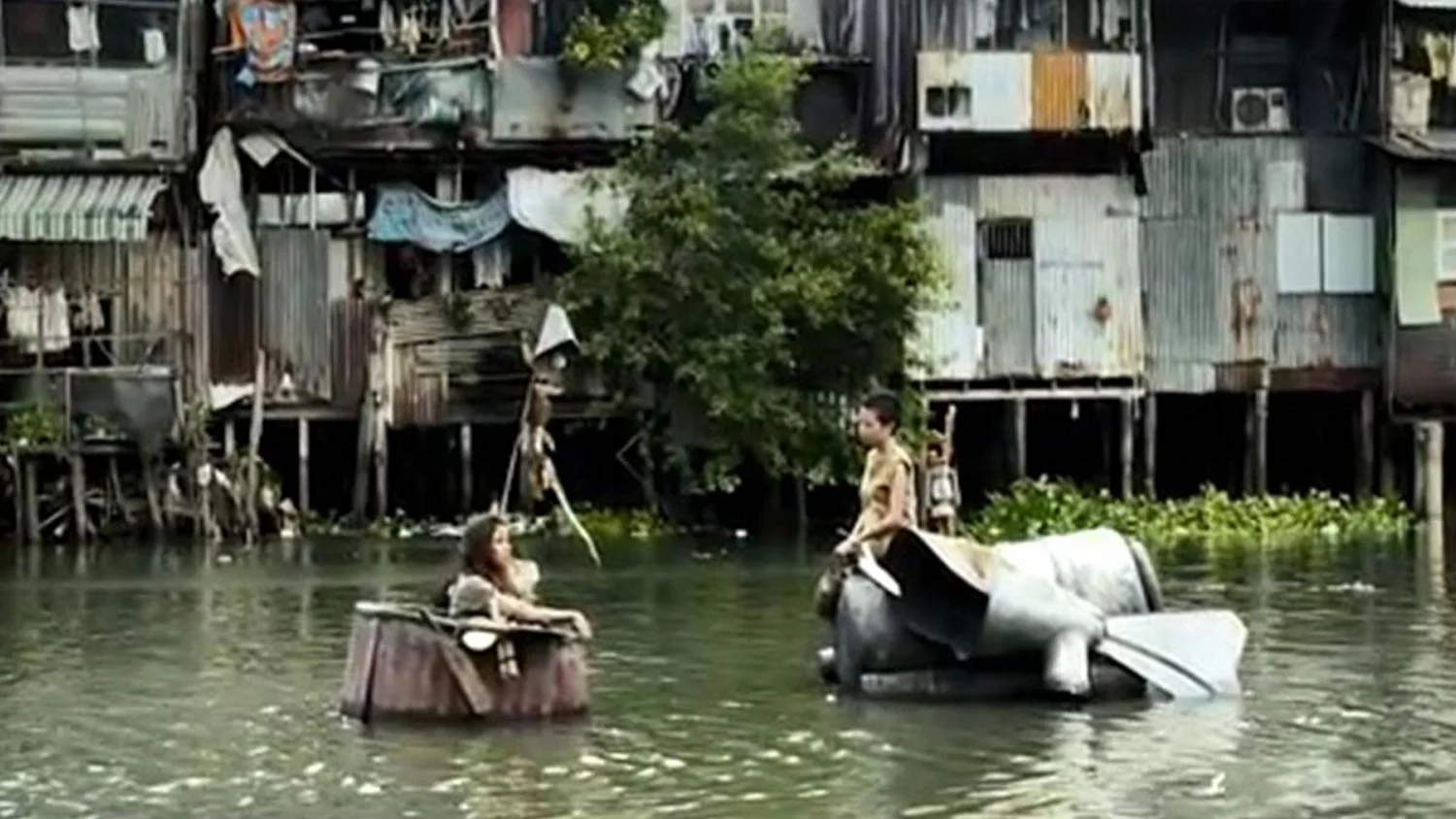Boats and Narratives: Afloat, Adrift, Astray?
By Sara Merican
As I was watching the Southeast Asian short films in-competition at the Festival, I realised that quite a few films featured vehicles (boats, rafts, trishaws) significantly. I was intrigued. What did they represent? Why did the filmmaker place them in his film? I started seeing them not as passive on-screen props, but as active motifs that helped to tell a story. In this article, I will be focusing on boats, rafts and other forms of floating vessels in three short films (Scent).In Wawa and Crocodile Creek, vessels are used as parallel experiences of a journey. As they wind through water channels, we travel with them through sinuous passages of emotion, history and loss.

Wawa opens with a young Filipino boy paddling a long raft down a river. Later, the raft is used to transport the body of the boy’s father to his final resting place, as the young boy sits silently on the raft, next to his mother chanting funeral rites. They are joined by many others on separate rafts, all partaking in a journey of grieving and farewell. The physical journey also represents an emotional one. As we gaze at the steady, consistent strokes and pokes of the paddle through the water, we soon realise that the boy is merely grasping and poking at his recent familial loss. Suddenly, he abandons the raft and rolls into the water. He is fully submerged. The raft represents a public journey of grieving, one that is ultimately insufficient to the boy in coping with death and sorrow. In the next scene, away from others, the boy enters his private journey to come to terms with his father’s death. He carries a bulky sack up a rocky terrain, sits perched atop a rock, and hugs his legs together in contemplation, before depositing his baggage in the river where it is carried away.

In Myanmar’s Crocodile Creek— a film that combines traditions of oral storytelling, documentary and fiction— we are confronted by the complex relationship between Man and nature. The film seems to want to talk about two topics— environmental destruction and native fable. Though it makes several attempts to link these two threads, the overall coherence is somewhat lacking. Still, the content is intriguing and does make me excited to see what the filmmaker could create in future, with more polish and clarityOn the topic of environmental devastation, a woman on a boat gives us a stern warning early in the film “You must not disrespect it (the creek).” From the boat, we observe how the creek has been shaped and influenced by the activities of the people living along it. Riverside businesses dump their waste into the water, causing piles of garbage to accumulate on the riverbanks. Additionally, the creek is experiencing increased sedimentation and a man, speaking directly to the camera, hints at the potential demise of the creek in the near future.As the boats in the film creak their way through the water, we are brought along in their journey, ploughing and trudging back through the past. Linking the environment to an old fable, the creek is the setting for a story about a prince, princess and crocodile. This fable is very much alive within the creek community and they embark on an annual ritual to give offerings to the crocodile spirit guarding the river. However, this fable is currently in danger of being swept away by the currents of time and environmental devastation. As the man puts it poignantly, “How can the fable exist if the creek is no more?”The relationship between man and nature is perhaps best embodied by the curious motif of a boat, where the man-made and the natural hang in precious balance. Despite the environmental pollution and destruction caused by Man, the manmade can also be used as a means to restore and resolve such devastation. The woman makes use of a boat, a manmade contraption, to venture into the river and collect floating rubbish, giving us a glimpse of hope and resolution. I was particularly struck by an early scene of a boat’s reflection onto the murky river water, which perhaps foreshadowed the film’s presentation of the interactions between man and nature to be far more unclear and ambiguous than we think. The film pushes us to reflect upon environmental devastation as well as how a place influences our identities, history, stories and rituals.



Different from Wawa and Crocodile Creek, Scent presents vessels less as experiences of a journey. Instead, the space of a boat is explored as an embodiment of a character’s state of existence. The lead female character is frequently found paddling through the canal in her round metal raft while the girl she meets in the pregnancy home has her own handmade submarine constructed from a weathered barrel. Despite having a fixed, stationary pregnancy home to go back to, the two female characters choose to have their late-night rendezvous on the handmade submarine floating in the middle of the canal.The crudely constructed submarine is their island of comfort and solace. Symbolising their state of existence, the unmoored, unanchored, floating contraption is adrift, and the two female characters are similarly adrift in life.The film also uses the vessels to suggest hierarchies of power. A large boat blocks the path of the lead female character’s small, humble, self-paddled raft. An old man steps out and prods tauntingly at her abdomen. He appears later in the film with a motorised boat. The sharp, mechanised whirr of engines cuts crisply through the gentle burble of water. Boats and rafts are employed as devices to represent where the different characters stand in life, in the story, as well as in relation to each other.As with many other elements shown on film, there is really more than meets the eye. Each prop, action, word and sound can contribute to advancing some part of the story. In the three films discussed, boats and rafts are used as visual tools to convey the internal and unseen in an external and tangible manner. They also suggest a certain geography of Southeast Asia—one that is populated by many waterways—and a way of life that is inseparable from its surrounding nature.